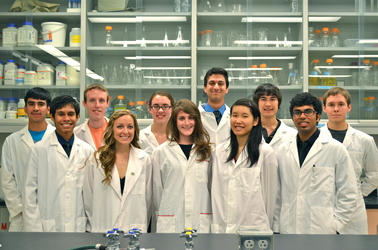By Kalwinder KaurSep 7 2012
Diarrheal disease is the second-most major death causing sickness in children aged below five globally. Each year, it takes toll on 1.5 M children. With this statistics from the World Health Organization (2009), Arizona State University’s undergraduate students focus on creating an affordable biosensor for detecting contaminated drinking water.
 ASU iGEM team members and summer assistants
ASU iGEM team members and summer assistants
An interdisciplinary team comprising of nine students will take part in the 2012 International Genetically Engineered Machine (iGEM) competition where students will compete in designing and constructing simple biological systems engineered from interchangeable, standard components.
The ASU team began researching during the summer while getting trained for the synthetic biology competition as well. The main objective is designing and developing a simple, easy-to-use, field-applicable DNA-based biosensor capable of detecting major pathogens.
The team is now focused on two biosensor designs, where the first one will target DNA as each type of pathogen has its own unique DNA. After collecting bacterial samples from the water, their DNA can be analyzed by matching with the complementary DNA probe. When the DNA from the material under study complements the probe, a color response is indicated, thereby determining the contamination.
The second design will test the bacterial membrane. When proteins attach to a bacterial membrane, a blue color will be generated within the sample, showing the presence of pathogen within the water.
The team will present this versatile device in October during the iGEM regional competition at Stanford University. Based on its success, it will advance to the global competition at Massachusetts Institute of Technology in November.
Disclaimer: The views expressed here are those of the author expressed in their private capacity and do not necessarily represent the views of AZoM.com Limited T/A AZoNetwork the owner and operator of this website. This disclaimer forms part of the Terms and conditions of use of this website.